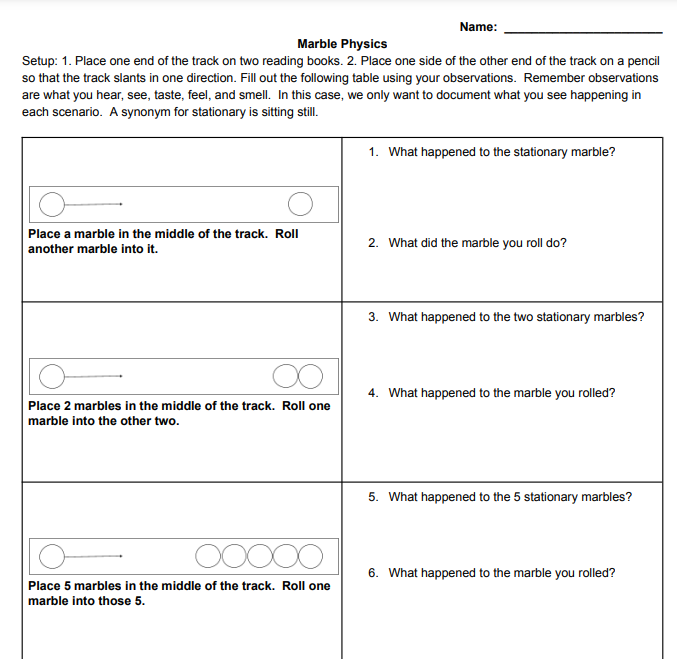Marble Physics
Preview/Download

Students will be engaged in hands-on experimentation and discover the principles of motion and collision through a series of captivating lab exercises.
Lab Setup: To begin, set up the lab by placing one end of the track on two reading books and the other end on a pencil, creating a slanted track. The angle of the track will determine the direction of the marble movement.
Observation Table: Students will record what they see happening in various scenarios using the marble track. Remember, observations include what is heard, seen, tasted, felt, and smelled, but in this case, only visual observations are required.
Lab Scenarios: Students will conduct a series of experiments with different configurations of marbles and boulders on the track. They will roll marbles or boulders into stationary objects and record the resulting interactions. The scenarios progressively introduce more marbles and boulders, creating opportunities to explore the impact of size and mass on motion and collisions.
Relevance to Real-Life: This lab encourages students to reflect on how the experiment's findings relate to real-life situations, such as sports, cars, or skateboards. Students will discover the relationship between size, mass, and the resulting effects on motion and collision dynamics, enhancing their understanding of physics principles beyond the lab setting.
Benefits of Marble Physics Lab:
- Interactive Learning: The lab offers an engaging and interactive learning experience.
- Clear Instructions: Students are provided with clear instructions on setting up the lab and recording observations, ensuring they can navigate the experiment effectively.
- Hands-On Exploration: Through the lab scenarios, students actively explore concepts of motion and collisions, strengthening their understanding of physics principles.
- Critical Thinking Skills: Students are encouraged to analyze and interpret their observations, promoting critical thinking and scientific reasoning.
- Real-Life Applications: The connection between the experiment and real-life scenarios cultivates students' ability to apply physics concepts to practical situations.
